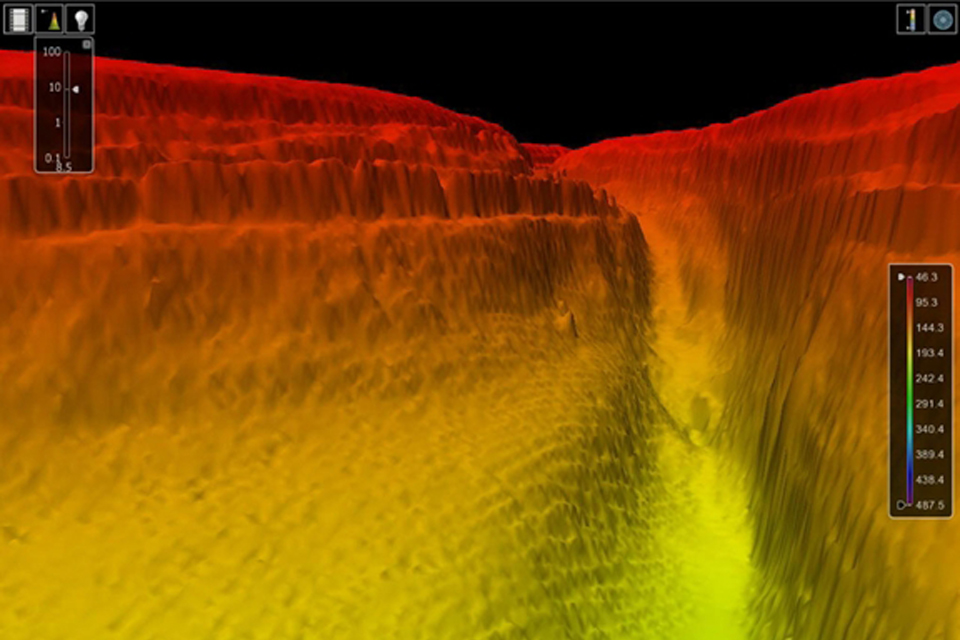
Huge Canyon Discovered Beneath Red Sea

A canyon more than 800-foot-deep has been discovered on the floor of the Red Sea by the U.K. Royal Navy's HMS Enterprise, using an echo sounder that produce 3D images of the feature.
The survey ship was probing the topography of the bottom of the Red Sea as part of a mission to better understand the waters of the Red Sea west of Suez, Egypt, and their safety for shipping and navigation, according to a release from the U.K. Ministry of Defence (MoD).
The multibeam echo sounder used by the ship sends out pulses of sound waves that bounce of seafloor features and return back to the instrument. The longer it takes for a pulse echo to return, the deeper the seafloor feature off which it bounced. (This method has also been used to map the Challenger Deep, the deepest spot in the Earth's oceans.)
The data from the sounder can be compiled into a 3D image of the ocean floor.
The "Grand Canyon-style" feature, as the MoD release calls it, measured 820 feet (250 meters) in depth. The find was initially reported by Discovery News.
The commanding office of the Enterprise, Derek Rae, said that the canyon could have been created by ancient rivers cutting through the layers of rock before the area was flooded and became the Red Sea.
There is also the possibility that it is a younger feature, he said in the release, scoured by underwater currents and still in the process of being formed. Or they could have been formed by some combination of the two processes, he added.
Sign up for the Live Science daily newsletter now
Get the world’s most fascinating discoveries delivered straight to your inbox.
"It is, however, almost certain to say that this is the closest that humans will ever get to gaze upon these truly impressive sights hundreds of meters beneath the surface," Rae said.
The Enterprise is scheduled to stay in the Middle East until the summer, further mapping the seafloor. Its sister ship, the HMS Echo, was previously in the region for a 19-month deployment and found several shipwrecks and other obstacles.
Reach Andrea Thompson at athompson@techmedianetwork.com and follow her on Twitter @AndreaTOAP and on Pinterest. Follow OurAmazingPlanet on Twitter @OAPlanet. We're also on Facebook and Google+.

Andrea Thompson is an associate editor at Scientific American, where she covers sustainability, energy and the environment. Prior to that, she was a senior writer covering climate science at Climate Central and a reporter and editor at Live Science, where she primarily covered Earth science and the environment. She holds a graduate degree in science health and environmental reporting from New York University, as well as a bachelor of science and and masters of science in atmospheric chemistry from the Georgia Institute of Technology.









